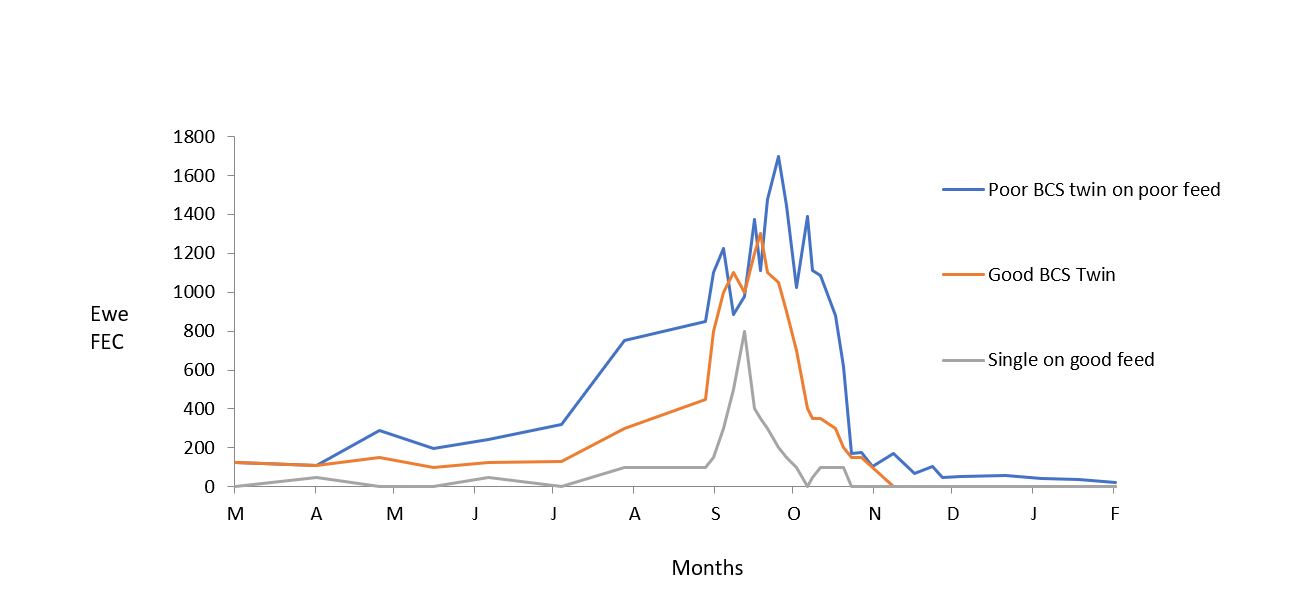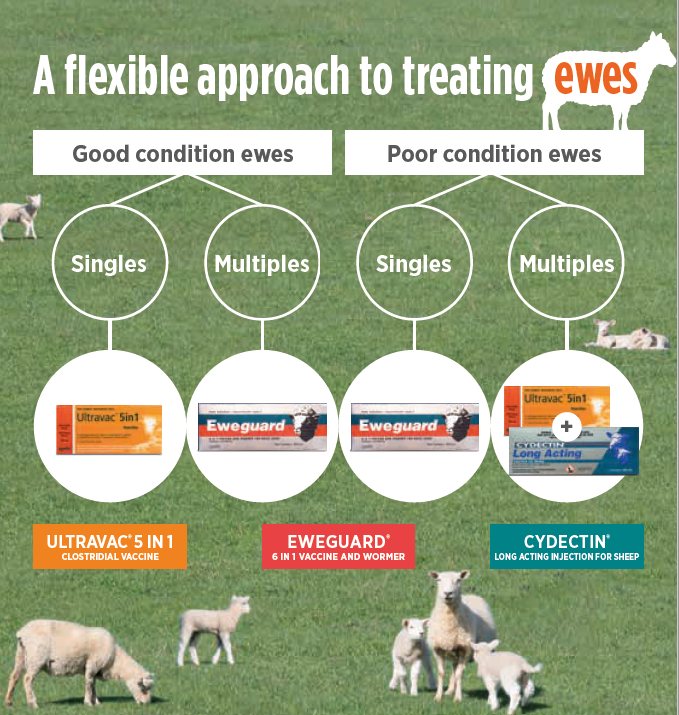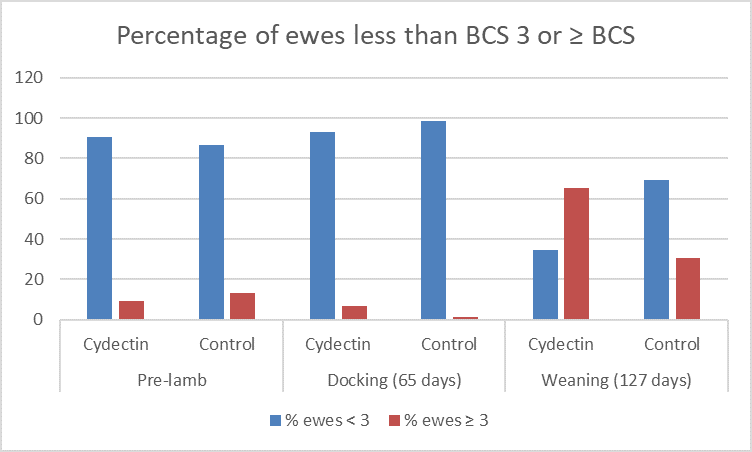Parasites
Parasites will have an impact on both the ewes and their lambs. Ewes in late pregnancy, that are carrying multiple lambs, simply cannot eat enough pasture to meet their total energy requirements, as a result their immune system becomes compromised. This allows more infective larvae to survive and become established, and the existing parasites to increase their egg output.
The size and duration of this rise in egg output will often depend on the degree of stress the ewe is under. Generally, the greater the stress, the greater will be the period of higher egg output. The size of this contamination dictates the degree of exposure for the lambs once they start grazing pasture.
The periparturient rise in egg count of the ewe is often a good indicator of the stress the ewe is under.

In order to effectively reduce this exposure, we need to match the drench treatment of the ewes with the likely period of contamination. This is best achieved by dividing our ewes up based on the number of lambs they carry and their body condition score.
- Poor conditioned ewes carrying multiple lambs need the longest cover, so a long acting product like Cydectin® Long Acting Injection for Sheep is an ideal choice.
- Ewes carrying multiple lambs that are in good body condition, and ewes carrying single lambs but are in poor condition may need treatment if other factors such as poor feed level and early lambing dates put them under more stress. Where this occurs, a shorter period of parasite cover is probably appropriate. Eweguard® or Cydectin injection are ideal choices in this situation.
- Ewes in good body condition that are only carrying a single lamb do not need any anthelmintic treatment.

Trial work looking at treating poor conditioned ewes carrying twins with Cydectin Long Acting Injection for Sheep, showed that by weaning the treated ewes were 3.2kg heavier, and their lambs were 2.6kg heavier than those of untreated ewes2. It also showed that about 40% more of the treated ewes were at BCS 3 or better by weaning, meaning less feed was required to get them up to mating weight over the summer and autumn. This feed could then be allocated for lamb fattening.
